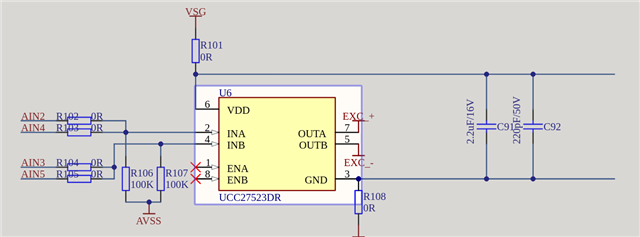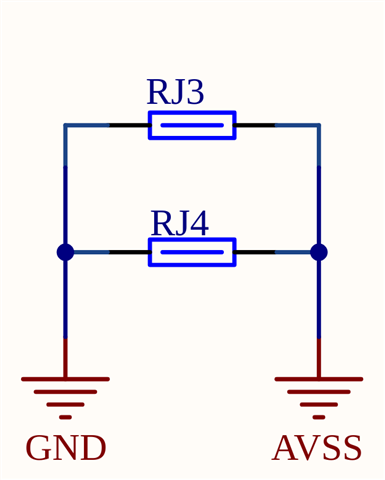Tool/software:
Hi all,
We are currently experimenting a strange issue with the 2 wire excitation mode. Our schematics, is exactly the same as the one in the EVM (with the exception that we use the UCC27523DR)

The custom pcb is for a 6 axis load cell, and the acquisistion is roughly like this:
- Setup the DRDY pin as interrupt mode
- Configure the ADS (PGA on, gain 1, default for all the other registers)
- Start continuos conversion at 40 ksamp/s
- Everytime we receive an interrupt, we read the value and switch to the next channel and so on
The acquisistion is differential: basically one channel of the load cell with an "hardware" offset.
This works very well in NORMAL and CHOP mode, but when we try to setup ACX mode (to see the effect on the temperature), the acquisistion system seems to saturate somehow. I have made some acquisistion so to help better to understand the problem.
Photo 1: INA and INB (equal to AIN2 / AIN3) at 40 ksamp/s

Photo 2: ECX+ and ECX- output

Photo 3: Acquisistion when the gain is set to 1 (status reg = 0x0D, reference low alarm)

Photo 4: Acquisistion when the gain is set to 32 (status reg = 0x3D, reference low alarm, pga high / low alarm)

The ADS1261 is powered with a single supply of 5V (no bipolar, but AVDD = 5V and AVSS = GND).
What we noticed is that if we switch the reference from the default one (AVDD / AVSS) to internal reference positive / negative, the measure is not saturating always, but it has some spikes in the measurement (see photo below):
Can it be that for ACX mode we need a dual supply voltage?


